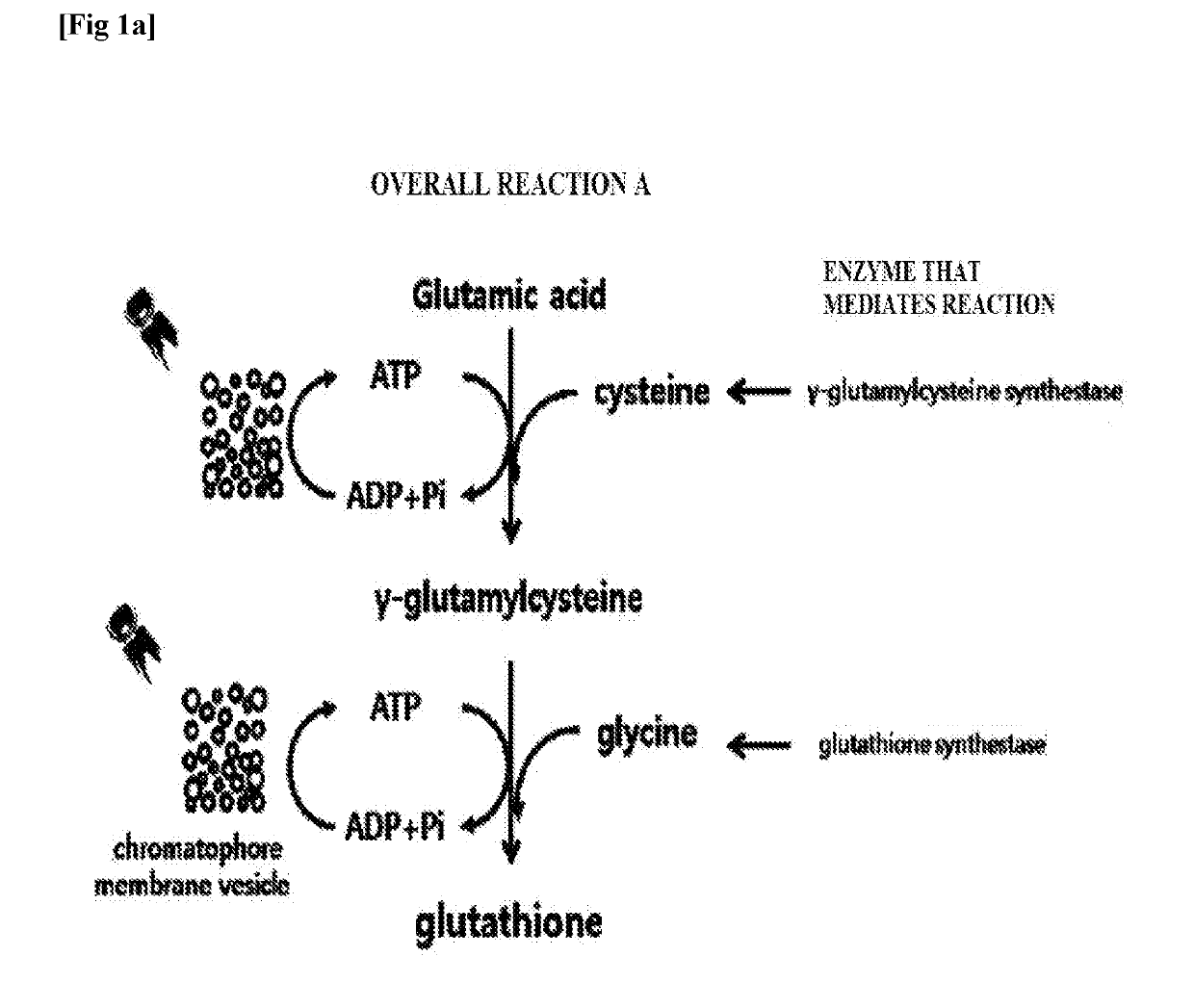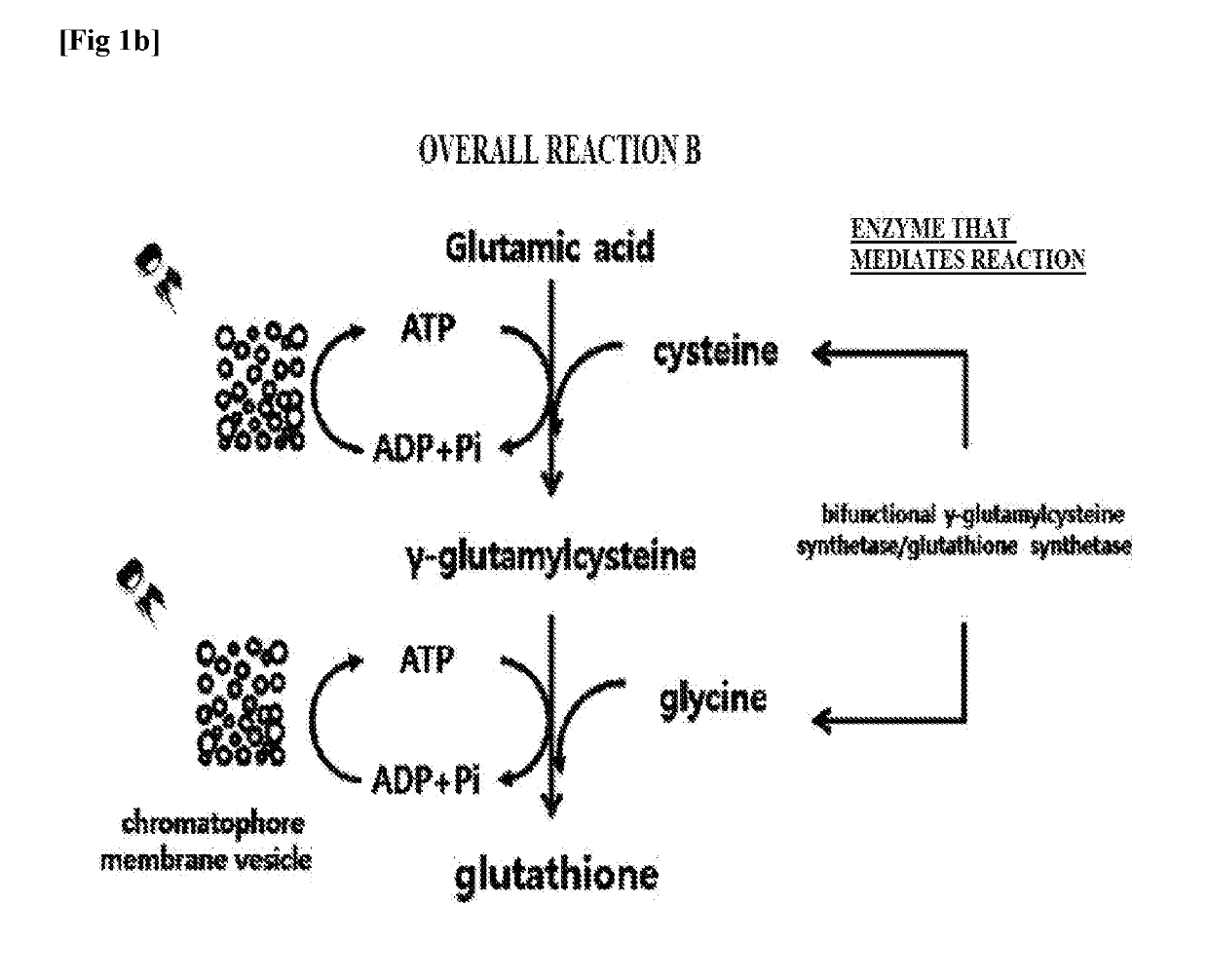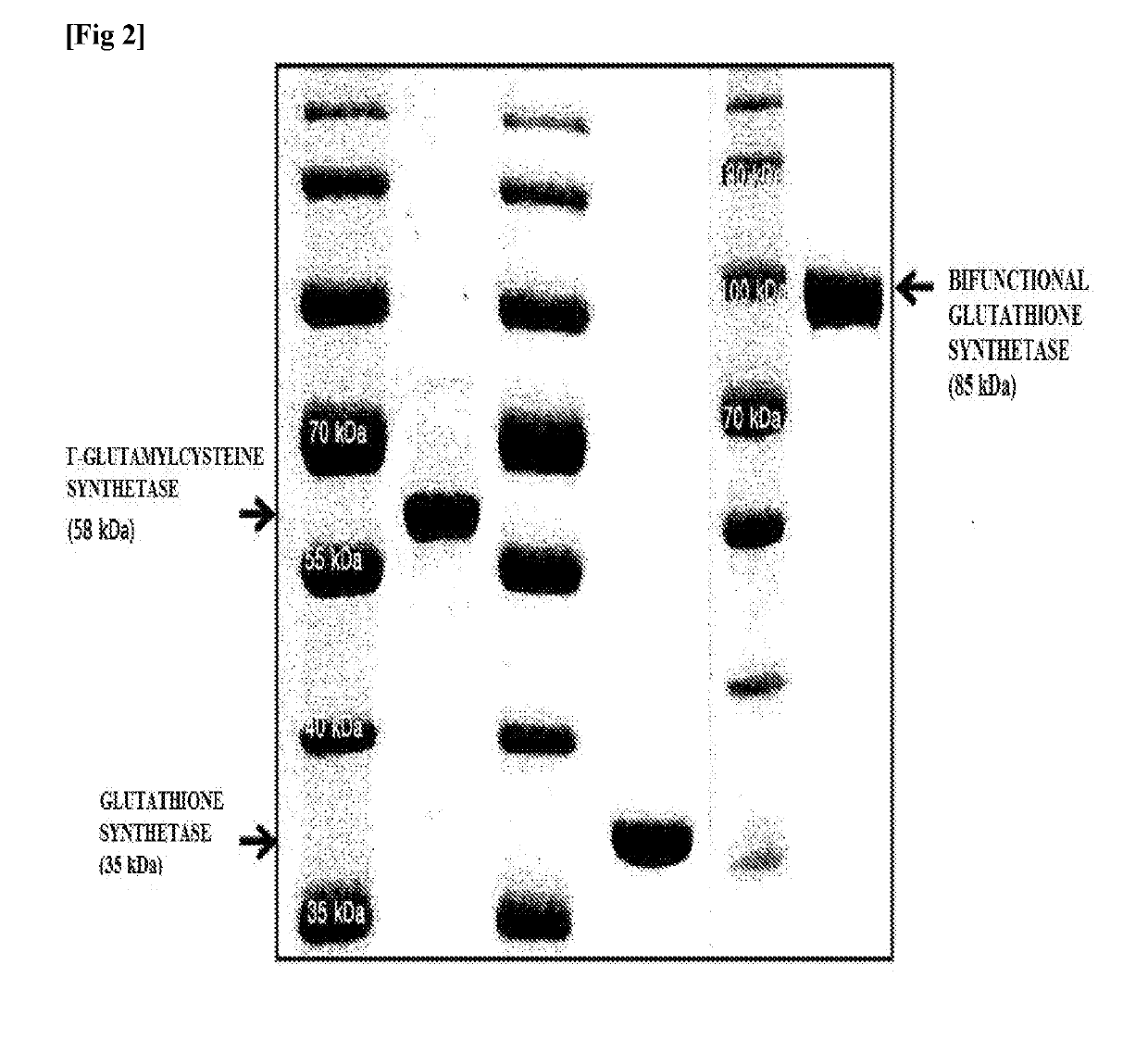Method of continuously producing glutathione using photosynthetic membrane vesicles
a technology of photosynthetic membrane and glutathione, which is applied in the direction of peptides, ligases, enzymology, etc., can solve the problems of difficult commercialization of enzymatic methods, inability to solve cost problems completely, and inability to widely use methods
- Summary
- Abstract
- Description
- Claims
- Application Information
AI Technical Summary
Benefits of technology
Problems solved by technology
Method used
Image
Examples
example 1
Isolation of Chromatophore Membrane Vesicles
[0051]Chromatophore membrane vesicles are isolated using the method described in Korean Patent Application No. 10-2014-0151907. Rhodobacter sphearoides (Rhodobacter sphearoides 2.4.1, ATCC BAA-808, Cohen-Bazire et al. 1956. J. Cell. Comp. Physiol. 49: 25-68), a type of purple non-sulfur bacteria, was used to isolate chromatophore membrane vesicles. The strain was cultured in Sistrom's minimal medium (Sistrom. 1962. J. Gen. Microbiol. 28: 607-616, Table 1). The culture method is as follows. First, a test tube containing 5 ml of the medium was inoculated with the strain, and was subjected to shaking culture at 30° C. and 250 rpm. When culture absorbance at 660 nm was about 2.0, the medium was subcultured in an 18-ml screw cap test tube to an initial absorbance of 0.05, and then the screw cap test tube was filled with a fresh medium and sealed to block the exposure to oxygen. Culture was performed under photosynthesis conditions. Specifically...
example 2
Preparation of Genes Encoding Enzymes Involved in Glutathione Synthesis
[0052]To clone genes encoding γ-glutamylcysteine synthetase and glutathione synthetase of overall reaction A (FIG. 1a), respectively, and a gene encoding bifunctional glutathione synthetase of overall reaction B (FIG. 1b), polymerase chain reaction (PCR) was performed. In the case of γ-glutamylcysteine synthetase, SEQ ID NO. 1 and SEQ ID NO. 2 were used as a forward primer and a reverse primer, respectively. In the case of glutathione synthetase, SEQ ID NO. 3 and SEQ ID NO. 4 were used as a forward primer and a reverse primer, respectively. In both cases, the chromosomal DNA of Escherichia coli (Escherichia coli str. K-12 substr. MG1655) was used as a PCR template. In the case of bifunctional glutathione synthetase, SEQ ID NO. 5 and SEQ ID NO. 6 were used as a forward primer and a reverse primer, respectively, and the chromosomal DNA of Streptococcus agalactiae (Streptococcus agalactiae str. 2603V / R, ATCC BAA-611...
example 3
Purification of Enzymes That Catalyze Glutathione Synthesis Reaction
[0053]Escherichia coli strains BL21 (DE3) were transformed with the expression vectors prepared in Example 2, and transformed strains overexpressing γ-glutamylcysteine synthetase, glutathione synthetase and bifunctional glutathione synthetase, respectively, were obtained. The same method was used for purifying these enzymes. First, 5 ml of LB (Luria-Bertani) medium containing 50 μg / m1 ampicillin was added to a test tube, and the transformed strain was inoculated in the test tube, followed by shaking culture at 250 rpm and 37° C. for 12 hours. The cells, then, were inoculated into a 1 L flask filled with 500 ml LB medium containing 50 μg / ml ampicillin. At the time of inoculation, an initial absorbance at 600 nm was adjusted to 0.05, and then shaking culture was performed at 250 rpm and 37° C. until absorbance reached 0.4. Anhydrotetracycline was added to the culture at a concentration of 0.2 μg / ml and shaking culture...
PUM
| Property | Measurement | Unit |
|---|---|---|
| temperature | aaaaa | aaaaa |
| temperature | aaaaa | aaaaa |
| volume | aaaaa | aaaaa |
Abstract
Description
Claims
Application Information
 Login to View More
Login to View More - R&D
- Intellectual Property
- Life Sciences
- Materials
- Tech Scout
- Unparalleled Data Quality
- Higher Quality Content
- 60% Fewer Hallucinations
Browse by: Latest US Patents, China's latest patents, Technical Efficacy Thesaurus, Application Domain, Technology Topic, Popular Technical Reports.
© 2025 PatSnap. All rights reserved.Legal|Privacy policy|Modern Slavery Act Transparency Statement|Sitemap|About US| Contact US: help@patsnap.com



